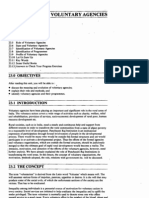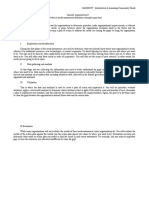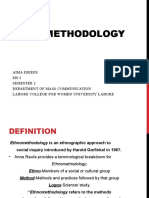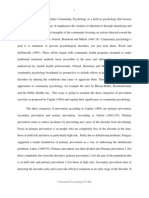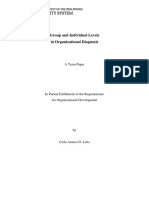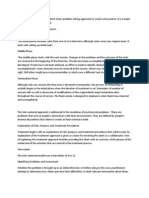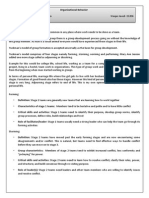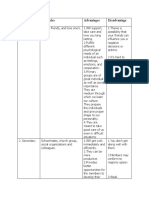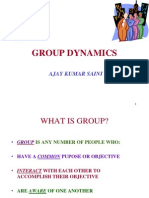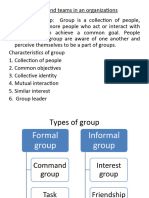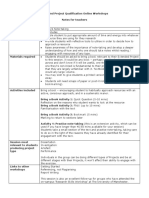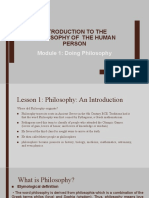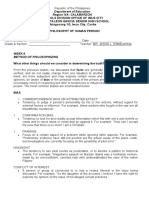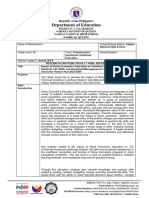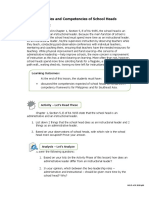0% found this document useful (0 votes)
1K views61 pagesGroup Dynamics
Group dynamics refers to the interaction between members of a group and the forces that influence individual and group behavior. There are typically four stages of group formation:
1) Individual oriented stage where members are curious about the purpose and get to know each other.
2) Emotional stage and potential conflicts as differences in opinions can lead to emotional ups and downs.
3) Consolidation phase where cordial relations are established and a framework develops.
4) Cohesion stage where members are fully committed to the task and function efficiently without a need for leadership dominance.
Group roles include positive roles that encourage cooperation, negative/blocking roles that hinder participation, and group-building/maintenance roles to form
Uploaded by
Sudarshan DhunganaCopyright
© © All Rights Reserved
We take content rights seriously. If you suspect this is your content, claim it here.
Available Formats
Download as PPTX, PDF, TXT or read online on Scribd
0% found this document useful (0 votes)
1K views61 pagesGroup Dynamics
Group dynamics refers to the interaction between members of a group and the forces that influence individual and group behavior. There are typically four stages of group formation:
1) Individual oriented stage where members are curious about the purpose and get to know each other.
2) Emotional stage and potential conflicts as differences in opinions can lead to emotional ups and downs.
3) Consolidation phase where cordial relations are established and a framework develops.
4) Cohesion stage where members are fully committed to the task and function efficiently without a need for leadership dominance.
Group roles include positive roles that encourage cooperation, negative/blocking roles that hinder participation, and group-building/maintenance roles to form
Uploaded by
Sudarshan DhunganaCopyright
© © All Rights Reserved
We take content rights seriously. If you suspect this is your content, claim it here.
Available Formats
Download as PPTX, PDF, TXT or read online on Scribd
/ 61










